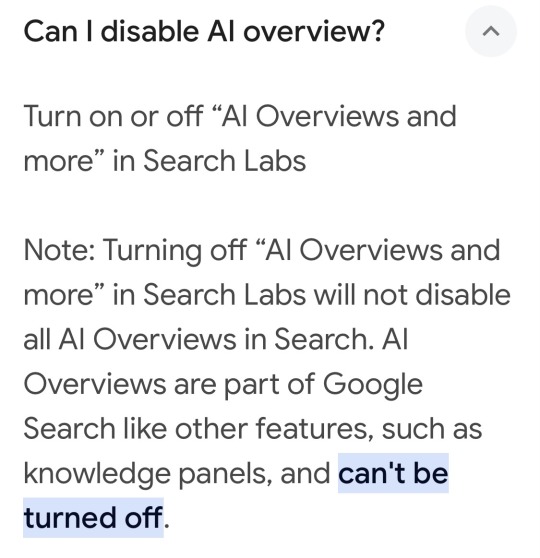#medical ai
Explore tagged Tumblr posts
Text
youtube
Infermedica AI in Healthcare: Beyond Thinking Like a Doctor
In this insightful video, we explore the groundbreaking role of Infermedica AI in healthcare.Learn how advanced AI technologies are transforming medical diagnostics by going beyond simply mimicking a doctor's thought process. Discover how Infermedicaenhances patient care, improves diagnosis accuracy, and empowers healthcare professionals. This video dives into the future of AI in the medical field and its potential to revolutionize healthcare delivery worldwide.
#Infermedica#AI in healthcare#medical AI#healthcare technology#AI diagnostics#healthcare innovation#digital health#artificial intelligence#future of medicine#healthcare revolution#Youtube
1 note
·
View note
Text
#Data Annotation#Medical AI#Disease Detection#health benefits#healthcare sector#Disease Detection in Healthcare#Disease Detection AI
0 notes
Text
youtube
#Cancer diagnosis#deep learning#histopathology#ResoMergeNet#breast cancer#colon cancer#lung cancer#cancer prognostication#AI in healthcare#digital pathology#medical AI#machine learning models#multi-resolution analysis#pathology innovation#precision medicine#oncology AI#healthcare technology#cancer care#histopathological imaging#cancer research.#Youtube
0 notes
Text
Revolutionize Healthcare With Spatial Computing

Spatial computing, encompassing AR, VR, and MR, is revolutionizing healthcare by merging digital and physical realms. It enhances patient centered care, boosts surgical precision, and transforms medical education. As this technology integrates into healthcare, understanding its potential is crucial for professionals navigating a digitally augmented future.
The Foundations of Spatial Computing in Healthcare
Spatial computing blends physical and digital worlds through AR, VR, and MR, revolutionizing healthcare enhancements.
Augmented Reality (AR)
AR overlays digital info onto the real world, aiding surgeries and diagnostics by providing real-time data. It has reduced surgical errors and improved efficiency by up to 35% in studies.
Virtual Reality (VR)
VR immerses users in virtual environments, facilitating training and simulation for medical procedures. VR-trained surgeons perform 29% faster and are 6 times less likely to make errors compared to traditionally trained counterparts.
Mixed Reality (MR)
MR combines AR and VR, enabling real-world interaction with virtual objects, enhancing collaborative medical settings. It facilitates surgical planning and improves educational outcomes through engaged learning experiences.
Spatial computing integrates into healthcare IT systems, supported by devices like Apple Vision Pro and platforms from Microsoft and Google, enhancing user experiences. Understanding its capabilities is crucial for healthcare professionals to optimize patient care and operational efficiency as its applications become more widespread.
Enhancing Surgical Precision and Safety
Spatial computing revolutionizes surgical practices, enhancing precision, safety, and patient outcomes through AR and VR integration.
Augmented Reality in Surgical Procedures
AR enhances surgical precision by overlaying real-time, 3D images of patient anatomy, reducing invasive exploratory procedures. AR-guided surgeries decrease operation duration by up to 20% and improve surgical precision, minimizing postoperative complications.
Virtual Reality for Surgical Training
VR simulations offer hands-on training without live procedure risks, especially beneficial for neurosurgery and orthopedics. VR-trained surgeons perform procedures approximately 30% faster and have error rates reduced by up to 40% compared to traditional methods.
Mixed Reality for Collaborative Surgery
MR fosters collaboration by combining VR and AR benefits, allowing real and digital elements to coexist. It aids in complex surgeries, potentially reducing operation times and enhancing outcomes through improved teamwork and planning.
Case Study: Implementing AR in Orthopedic Surgery
AR technology in orthopedic surgery achieves 98% accuracy in implant alignment, surpassing traditional methods by 8%.
The Future of Surgical Precision
Advancements like AI-enhanced spatial computing and lighter AR glasses will refine surgical precision. Integration of spatial computing promises safer procedures, improved outcomes, and enhanced healthcare delivery.
Revolutionizing Medical Education and Training
Spatial computing, notably through VR and AR, revolutionizes medical education by offering immersive, interactive simulations, enhancing learning and retention.
Virtual Reality in Medical Training
VR offers immersive, risk-free practice for medical students, leading to a 230% improvement in surgical technique performance.
According to AxiomQ, VR significantly enhances skill acquisition in medical training.
Augmented Reality for Enhanced Learning
AR overlays digital info onto real-world objects, improving retention rates by up to 90% for complex subjects like anatomy.
Studies indicate higher satisfaction and engagement with AR training compared to traditional methods.
Mixed Reality for Collaborative Learning
MR combines VR and AR for interactive group training, enhancing collaboration efficiency by up to 50%.
Participants in cardiology training with MR applications demonstrated a 40% faster learning curve and 25% fewer errors than those using traditional methods.
Broadening Horizons in Patient Care
Spatial computing, encompassing AR, VR, and MR, revolutionizes patient care by enhancing diagnostics, patient education, and therapies. It improves outcomes through immersive experiences, supported by statistics and real-life examples.
Enhanced Diagnostic Procedures
AR enhances diagnostic accuracy by overlaying digital info onto patient scans, leading to a 10% higher tumor detection rate. This accelerates diagnoses and improves treatment outcomes significantly.
Patient Education Through Virtual Reality
VR transforms patient education with immersive experiences, increasing understanding of health conditions by 30%. VR simulations illustrate disease effects comprehensibly to non-medical individuals.
Mixed Reality for Enhanced Therapeutic Interventions
MR customizes interactive environments for physical rehabilitation and mental health treatments, improving motor function recovery by 20% in stroke rehabilitation. Task-specific games and exercises in MR accelerate recovery rates.
Real-Life Example: Improving Chronic Pain Management
VR programs reduce chronic pain levels by 40% during sessions, decreasing reliance on pain medication. Immersive environments distract patients from pain, offering non-pharmacological pain management strategies.
The Future of Patient Care with Spatial Computing
AI advancements enable real-time adjustments to therapeutic programs, enhancing treatment effectiveness. Widespread spatial computing adoption supports remote patient monitoring and home-based care, expanding healthcare impact.
Transformative Diagnostic and Imaging Techniques
Spatial computing, encompassing AR, VR, and MR, revolutionizes diagnostic and imaging techniques in healthcare. These technologies offer unprecedented precision and interactivity, enhancing radiological imaging, detailed analysis, and real-time surgical navigation. For instance, AR improves accuracy in visualizing tumors, VR aids in preoperative planning, and MR reduces the need for secondary surgeries.
Future advancements will integrate spatial computing with AI for automated diagnostics, while lighter AR and VR hardware will facilitate broader adoption in clinical settings. This transformative approach sets a new standard in healthcare, advancing toward more personalized and effective patient care, with enhanced accuracy and reduced procedural times.
Operational Efficiencies and Future Prospects
Spatial computing, including AR, VR, and MR, significantly enhances operational efficiencies in healthcare. Integration into clinical workflows streamlines decision-making by providing real-time data and visual aids, reducing errors and speeding up routine tasks. Hospitals adopting AR for data integration report a 20% reduction in time spent on tasks like routine checks and data entry.
MR applications improve resource management by tracking equipment in real time, reducing idle time by up to 30% and boosting operational efficiency. Looking ahead, the integration of AI with spatial computing holds promise for even greater efficiencies, predicting patient flows and optimizing resource allocation. Virtual command centers utilizing VR and AR exemplify this potential, leading to a 40% improvement in response times to critical patient incidents.
Challenges and Ethical Considerations
Addressing the challenges of spatial computing in healthcare involves overcoming technical hurdles such as graphics fidelity and data accuracy, along with ensuring privacy and security compliance, particularly concerning patient data protection under regulations like HIPAA.
Ethical considerations surrounding patient consent and the psychological impacts of immersive treatments must be navigated carefully. Collaboration among technology developers, healthcare professionals, and regulatory bodies is essential to establish standards and best practices, fostering responsible adoption. Education and training for healthcare providers on the ethical and practical aspects of spatial computing will be crucial for its successful integration, ensuring transformative benefits without compromising patient privacy or well-being.
Concluding Thoughts: Envisioning the Future of Spatial Computing in Healthcare
Spatial computing is reshaping healthcare, improving surgical precision, medical training, and patient care. Despite its transformative potential, challenges such as technical limitations and ethical concerns need careful navigation for responsible integration of digital healthcare solutions.
Collaborative efforts are essential to address these challenges and unlock the full benefits of spatial computing. Advancements in AI integration, development of standards, and accessibility to underserved regions are key areas that require ongoing innovation and adaptation in the healthcare sector.
#Patient Centered Care#ai in healthcare#medical ai#healthcare technology#patient care#ai in the medical field#artificial intelligence in healthcare
0 notes
Text
Medical AI Recommends Self-Harm
Chatbot medical trial shut down after AI advises simulated patient that he should commit suicide 👨⚕️
0 notes
Text
Revolutionizing Cancer Diagnosis: An In-Depth Analysis of the AI in Cancer Diagnostics
The global AI in cancer diagnostics market size is expected to reach USD 996.1 million by 2030, growing at 26.3% CAGR from 2023 to 2030, according to a new report by Grand View Research, Inc. The increasing need for lowering healthcare costs, the rising importance of big data in healthcare, improving adoption of precision medicine, and declining hardware costs are key factors driving the growth.
AI In Cancer Diagnostics Market Report Highlights
Based on component, the software solutions segment held the largest market share of 43.7% in 2022. The development of AI-based software solutions for cancer diagnostics is one of the key factors boosting segment growth
Based on cancer type, the other cancers segment emerged as the largest segment with a revenue share of 33.6% in 2022. Growing adoption of a sedentary lifestyle increased alcohol & tobacco consumption, and physical inactivity are driving the incidence of cancers such as bladder and skin cancers
Based on end-user, the hospital segment emerged as the largest end-user in the market, with a market share of 57.7% in 2022. The growing shortage of medical professionals and technological advancements in hospitals is expected to drive the segment
North America dominated the global market with a share of 56.0% in 2022. The rising adoption of healthcare IT solutions, the well-established healthcare sector, and the availability of funding for developing AI capabilities are some of the factors contributing to the growth of the market in the region
Gain deeper insights on the market and receive your free copy with TOC now @: Artificial Intelligence In Cancer Diagnostics Market Report
The increasing scope of applications of artificial intelligence (AI) in various healthcare fields, including diagnostics; the rising prevalence of cancer; and the growing shortage of public health workforce are some of the key factors anticipated to fuel the adoption of artificial intelligence (AI) in cancer diagnostics over the forecast period. In addition, the increasing applicability of AI-based tools in cancer care and the rise in venture capital investments is further driving the surge in demand for this technology.
The presence of prominent players in the market such as Microsoft, Flatiron, Therapixel, and Tempus, is anticipated to positively impact the growth. These players are adopting strategies such as acquisitions, collaborations, expansions, and new product launches to increase the reach of their products in the industry and increase the availability of their products & services in diverse geographical areas. For instance, in December 2021, Microsoft announced a partnership with CVS Health to develop innovative solutions for patients to improve their health while empowering healthcare professionals with tools to better service patients.
Furthermore, the rising government support in the form of funding and initiatives for the development of healthcare infrastructure is anticipated to drive the demand for technologically advanced and cost-efficient devices over the forecast period.
#AI in Cancer Diagnostics#Cancer Diagnosis#Medical AI#Oncology#Cancer Detection#HealthTech#Cancer Research#Diagnostic AI#Digital Health#Cancer Care#Radiology AI#Healthcare AI
0 notes
Text
"When Ellen Kaphamtengo felt a sharp pain in her lower abdomen, she thought she might be in labour. It was the ninth month of her first pregnancy and she wasn’t taking any chances. With the help of her mother, the 18-year-old climbed on to a motorcycle taxi and rushed to a hospital in Malawi’s capital, Lilongwe, a 20-minute ride away.
At the Area 25 health centre, they told her it was a false alarm and took her to the maternity ward. But things escalated quickly when a routine ultrasound revealed that her baby was much smaller than expected for her pregnancy stage, which can cause asphyxia – a condition that limits blood flow and oxygen to the baby.
In Malawi, about 19 out of 1,000 babies die during delivery or in the first month of life. Birth asphyxia is a leading cause of neonatal mortality in the country, and can mean newborns suffering brain damage, with long-term effects including developmental delays and cerebral palsy.
Doctors reclassified Kaphamtengo, who had been anticipating a normal delivery, as a high-risk patient. Using AI-enabled foetal monitoring software, further testing found that the baby’s heart rate was dropping. A stress test showed that the baby would not survive labour.
The hospital’s head of maternal care, Chikondi Chiweza, knew she had less than 30 minutes to deliver Kaphamtengo’s baby by caesarean section. Having delivered thousands of babies at some of the busiest public hospitals in the city, she was familiar with how quickly a baby’s odds of survival can change during labour.
Chiweza, who delivered Kaphamtengo’s baby in good health, says the foetal monitoring programme has been a gamechanger for deliveries at the hospital.
“[In Kaphamtengo’s case], we would have only discovered what we did either later on, or with the baby as a stillbirth,” she says.
The software, donated by the childbirth safety technology company PeriGen through a partnership with Malawi’s health ministry and Texas children’s hospital, tracks the baby’s vital signs during labour, giving clinicians early warning of any abnormalities. Since they began using it three years ago, the number of stillbirths and neonatal deaths at the centre has fallen by 82%. It is the only hospital in the country using the technology.
“The time around delivery is the most dangerous for mother and baby,” says Jeffrey Wilkinson, an obstetrician with Texas children’s hospital, who is leading the programme. “You can prevent most deaths by making sure the baby is safe during the delivery process.”
The AI monitoring system needs less time, equipment and fewer skilled staff than traditional foetal monitoring methods, which is critical in hospitals in low-income countries such as Malawi, which face severe shortages of health workers. Regular foetal observation often relies on doctors performing periodic checks, meaning that critical information can be missed during intervals, while AI-supported programs do continuous, real-time monitoring. Traditional checks also require physicians to interpret raw data from various devices, which can be time consuming and subject to error.
Area 25’s maternity ward handles about 8,000 deliveries a year with a team of around 80 midwives and doctors. While only about 10% are trained to perform traditional electronic monitoring, most can use the AI software to detect anomalies, so doctors are aware of any riskier or more complex births. Hospital staff also say that using AI has standardised important aspects of maternity care at the clinic, such as interpretations on foetal wellbeing and decisions on when to intervene.
Kaphamtengo, who is excited to be a new mother, believes the doctor’s interventions may have saved her baby’s life. “They were able to discover that my baby was distressed early enough to act,” she says, holding her son, Justice.
Doctors at the hospital hope to see the technology introduced in other hospitals in Malawi, and across Africa.
“AI technology is being used in many fields, and saving babies’ lives should not be an exception,” says Chiweza. “It can really bridge the gap in the quality of care that underserved populations can access.”"
-via The Guardian, December 6, 2024
#cw child death#cw pregnancy#malawi#africa#ai#artificial intelligence#public health#infant mortality#childbirth#medical news#good news#hope
899 notes
·
View notes
Text

💋💋💋
lemme know if you bingo'd on this lolol i must know for science
#DO NOT USE TO TRAIN AI#digital art#art#fanart#artist on tumblr#digital illustration#tf2#tf2 fanart#team fortress two#team fortress 2#team fortress 2 fanart#tf2 scout#tf2 soldier#tf2 pyro#tf2 demoman#tf2 demo#tf2 heavy#tf2 engineer#tf2 engie#tf2 medic#tf2 sniper#tf2 spy
547 notes
·
View notes
Text
i've been so tired of google's new legal liability bot sitting on top of the existing highlighted result, taking up page space and either parroting exactly what the highlighted result said or offering completely unrelated or incorrect results, that i actually cheered when this came up:

"oh but AI is experimental -"
the bot told people to eat glue on pizza. you can talk yourself blue in the face about the bot's learning curve and how "it'll be improved with time", but maybe a bot being touted as the latest and greatest in scouring the internet for accurate information should not come with a permanent glaring disclaimer of "it's still learning / results may not be accurate!" as the generative AI ouroboros continues to keep on chewing.
#google ai overview#and yES i know we use bots for existing search engine features#and how use ai for actually beneficial purposes such as in the medical field#but i am beyond burnt out on this ai hype trend and how every other website / company is flailing around their shiny new bot#i can't do this anymore i'm going outside
267 notes
·
View notes
Text
















It is important for pregnant fathers to keep up with their maternity wellness visits. Often, prompting from their partner is needed. (As as side note, I figured out how to get the AI to not make everyone pregnant: prompt the non-pregnant character as a background/secondary character. Also, some pruning is good on this type of posts, bad pics drown out the bad, I'm probably posting too many at once.)
198 notes
·
View notes
Text
90% of documentation sucks. 99% of LLM documentation sucks. Why? Possibilities:
LLM devs lack the necessary skills to write docs because they're under the age of 25 and have been working on the same couple projects that whole time.
LLM devs don't understand why docs are important because they're under the age of 25 and have been working on the same couple projects that whole time.
LLM devs view their work in the way that mystery cults view their worship, and enter an ecstatic state not conducive to communication upon opening Jupyter Notebook/Google Colab/etc. (It's like when a snake-handling churchgoer picks up the snake.)
LLM devs choose not to write docs because they think that providing publicly-accessible information on how their code can be used makes their expertise less-valuable in the job market:
"If I'm the only one who understands the tools I made, people who want to use my work will have to pay me."
-- Final words of 10,000 naive LLM devs who have spent the last 2 years duplicating each other's work without realizing it, because they have never provided a coherent public explanation of what their work is intended to do, making it impossible either for them to find each other or for prospective users to find them. They died of dysentery.
If they had lived only a few months longer, they'd have gotten back in the computer chair and discovered, with mounting horror, that they no longer know how to use their own work, because they spent a few months doing something else (hospital, PT, etc) and the unwritten knowledge that they thought they had hoarded - in fact recalled only due to near-daily repetition - fell out of their heads, teaching them an important lesson about their own fallibility.
They didn't, though. They died of dysentery. Very sad.
164 notes
·
View notes
Note
may i please also have organs? any realistic organs the grosser the better <3 thank u





#so like i believe all of these are man-made computer 3d art and not ai but sometimes it's hard for me to tell#png#transparent#request#meat#organs#organ#medical
76 notes
·
View notes
Text

I feel like people have been warning about this and I completely ignored it. Deep sigh as I force myself to remember to add “-ai” at the end of every fucking search now
(Is there an extension that turns this off??)
#google#google ai#google search#tw ai#it literally gave me incorrect medical information yesterday in the fucking AI overview
250 notes
·
View notes
Text

Sister Elysia, Hospitaler
A friend's character from our group's Wrath & Glory campaign.
#warhammer 40000#warhammer 40k#warhammer#grimdark#adeptus sororitas#adepta sororitas#sororitas#sister of battle#sisters of battle#battle sister#hospitaler#do you really want to scream medic and have her come running?#wrath & glory#wrath & glory rpg#character#also not sure if AI art or not but that left forearm and hand is a bit suspicious
374 notes
·
View notes